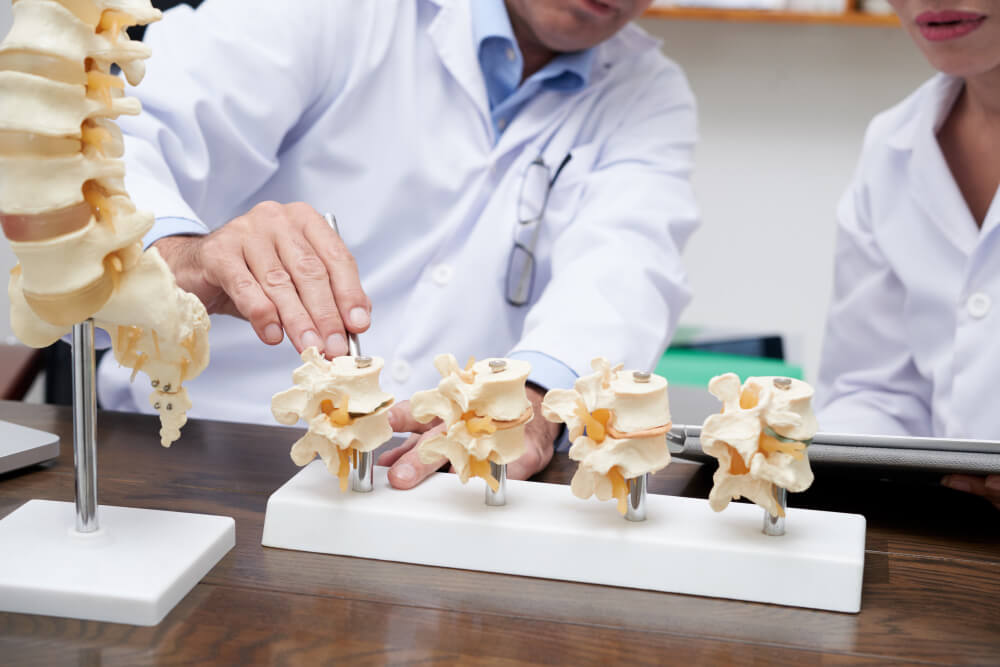Unveiling the Mystery of Spinal Stenosis: From Shrinking Space to Reclaiming Movement
Spinal stenosis, a term that whispers pain and constriction, is far from a mere medical diagnosis. It’s a narrative etched on the pages of millions of lives, a symphony of discomfort composed by a narrowing space within the spine. Imagine the spinal canal, the protective corridor for your vital spinal cord and nerves, gradually shrinking like a tightening belt. This is the essence of spinal stenosis, a condition that manifests in diverse forms and degrees, impacting movement and unleashing a chorus of discomfort. But within this tightening narrative lies hope, a symphony of treatment options waiting to be orchestrated, and the possibility of reclaiming a pain-free life. This article delves into the intricate world of spinal stenosis, unveiling its causes, symptoms, diverse treatment strategies, and preventive measures, empowering you to navigate this journey with understanding and confidence.
The Narrowing Narrative: Unveiling the Anatomy of Discomfort
Picture your spine as a towering structure of vertebrae, each block nestled upon another, cushioned by discs that act like shock absorbers and allow for smooth movement. In spinal stenosis, these shock absorbers, the discs, begin to degenerate or bulge, encroaching on the space within the spinal canal. This narrowing, like a tightening corridor, compresses the crucial spinal cord and nerves, leading to a cascade of discomfort. The story of stenosis unfolds in two main chapters:
- Lumbar Spinal Stenosis: This chapter focuses on the lower back, where narrowing can translate to pain and weakness radiating down the legs.
- Cervical Spinal Stenosis: This chapter takes place in the neck, where narrowing can manifest as neck pain, numbness, and even clumsiness in the hands.
The Culprits of the Contraction: Unmasking the Causes of Spinal Stenosis
Several unwelcome characters orchestrate the narrowing act in the drama of spinal stenosis:
- Age-Related Wear and Tear: Over time, the discs, like weathered actors, lose their cushioning, bulging and encroaching on the canal.
- Spinal Arthritis: Osteoarthritis and rheumatoid arthritis, the arthritic villains, attack the joints in the spine, contributing to the narrowing.
- Herniated Discs: When the inner gel of a disc, like a burst dam, leaks out, it presses on the spinal cord and nerves.
- Bone Spurs: These bony overgrowths, like unwelcome intruders, further tighten the space within the canal.
- Ligament Thickening: Thickening of the ligaments surrounding the spine, like a tightening corset, adds to the constriction.
- Spinal Injuries: Past traumas, like battle scars on the spine, can increase the risk of stenosis development.
Recognizing the Melodies of Discomfort: Symptoms of Spinal Stenosis
Spinal stenosis doesn’t announce itself with a single trumpet blast; instead, it whispers and shouts through a range of symptoms, depending on the location of the narrowing and its severity:
Lumbar Spinal Stenosis:
- Pain in the Lower Back and Legs: This is the most common melody, a persistent ache, numbness, or tingling that worsens with walking or standing, like a nagging reminder with each step.
- Weakness in the Legs: Difficulty walking, climbing stairs, or even lifting objects, as if the legs have lost their strength in the constricting narrative.
- Muscle Cramps: Tightness and involuntary muscle contractions, like unwelcome interruptions in the movement symphony, can occur in the legs or lower back.
- Numbness and Tingling: Loss of sensation or a pins-and-needsles feeling in the legs or feet, a sign that the nerves are caught in the tightening grip of stenosis.
Cervical Spinal Stenosis:
- Neck Pain: A persistent ache or stiffness in the neck, like a discordant note in the movement symphony, is often the first sign.
- Arm Pain, Numbness, or Tingling: Compression of nerves can cause discomfort and loss of sensation in the arms and hands, as if the signal from the spinal cord is garbled.
- Weakness in the Hands: Difficulty grasping objects or performing fine motor tasks, like a conductor losing control of the orchestra, can be a symptom.
- Dizziness and Balance Problems: In severe cases, compression of the spinal cord can affect balance and coordination, throwing the movement symphony into chaos.
Taming the Constriction: A Multifaceted Symphony of Treatment Options
While the narrative of spinal stenosis may seem daunting, a diverse orchestra of treatment options exists to help you rewrite it, composing a symphony of pain-free movement:
The Restful Rhapsody: Taking a Break from the Pain
Rest and activity modification are often the first steps, like taking a pause in the movement symphony. Reducing activities that aggravate


